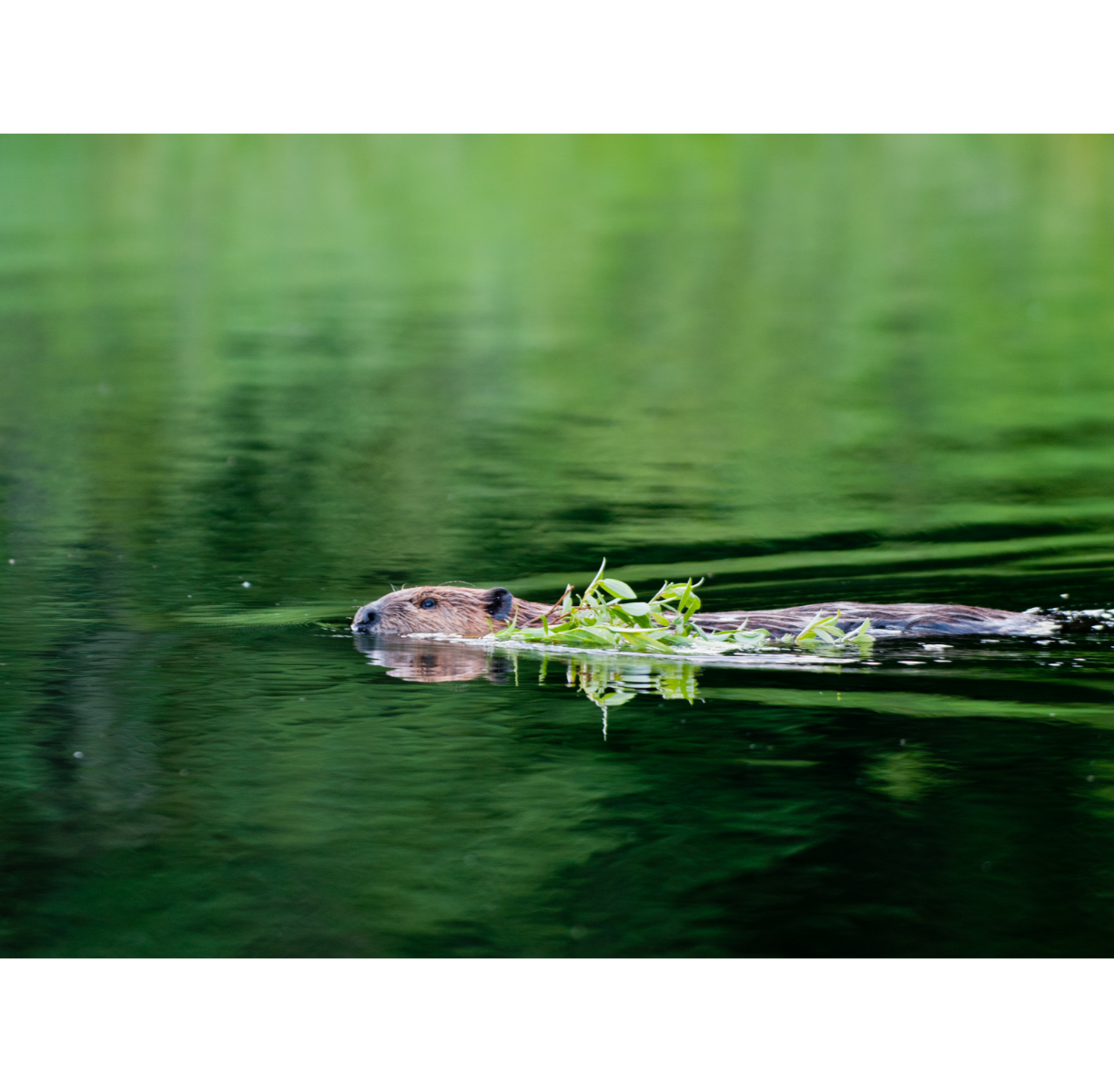


Incredibly exciting news – trail cameras inside the beaver enclosure at Wild Ken Hill have spotted a beaver kit – the first in Norfolk for over 600 years.
The kit was spotted swimming in the middle of the night through the wet areas of woodland created by its parents – the video clip can be seen on our Instagram, Facebook, and Twitter pages. What a thrill it was to watch for the first time the little mammal paddling through the water!
As readers of our previous blogs will know, there are two pairs of beavers at Wild Ken Hill, occupying separate territories within a 55 acre enclosure (which we believe to be the largest in England!). The pairs came together when in October 2020 we introduced two males – brothers called Blue and Orange, after the colour of their ear tags – into an enclosure where Ebb & Flow (named by the public) had been living for around 6 months.
This kit has been spotted in the territory belonging to Orange and Flow. Both Orange and Flow are only young adults and we had been advised by the beaver experts that have helped us with the project that they may not breed this year, being too young. But we started to see signs that they might breed earlier in the year. There was plenty of dam building activity in the winter and spring. and we frequently caught both beavers together on camera, suggesting they had settled down together. Then in May, we also spotted a beaver lodge in Blue and Ebb’s territory, suggesting that breeding might take place.
The video footage so far just shows 1 kit, but beavers typically have an average of 3 kits and can have up to 6 in a single year! So there could be more kits in the enclosure that we are yet to discover. We have deployed more camera traps to the area to identify the exact numbers, and we also want to make sure that both parents are still healthy and well.
There is also still the possibility that the other pair – Blue & Ebb – have bred this year. Our camera traps have spotted nothing yet from their territory, but in such a large enclosure, it’s possible we discover yet more over the coming months.
We are particularly excited about positive impact on biodiversity that growth of the beaver population at Wild Ken Hill will have. The four adult beavers have done a pretty good job so far of building dams that create the wetter areas so many other species rely on, as well as coppicing poplar and sycamore trees that will bring more light into the woodland and create regrowth. But with such a large area to call home, it was always going to be slow progress. Now with kits in the enclosure, we can expect to see an acceleration in ecosystem engineering, and hopefully an accompanying growth in biodiversity too!
On a number of days this year, we are running guided tours through the beaver enclosure. They’ve been really popular and can be booked online here. If you’re very lucky, you might see one of the beavers, although they’re nocturnal, so you’d have to be very fortunate!
Our Project Manager Dom was extremely pleased upon watching the video for the first time. Speaking to him, he said “This is another exciting step on the journey to restore beavers to East Anglia. Beavers bring huge benefits to our natural environment. With the right balance of protection and management, we could harness them across England to assist nature recovery and prevent flooding – the project here at Wild Ken Hill is seeking to demonstrate that”.
The Government is due to be consulting on the prospect of beavers being released into the wild (rather than enclosures) across England later this year. We’re expecting that this leads to a positive result, with the possibility of projects across England releasing beavers into the wild becoming very real.
There is also the exciting prospect of more beavers coming to Norfolk in the near future. Our friends over at the Norfolk Rivers Trust have plans to reintroduce beavers in an enclosure over on the River Glaven in North Norfolk. Beaver conservation is an exciting space at the moment, so stay tuned for more news on this front!